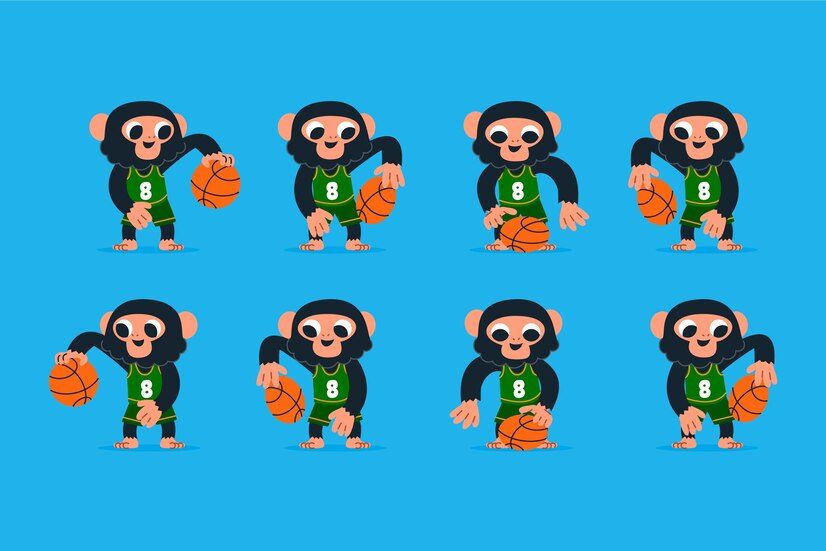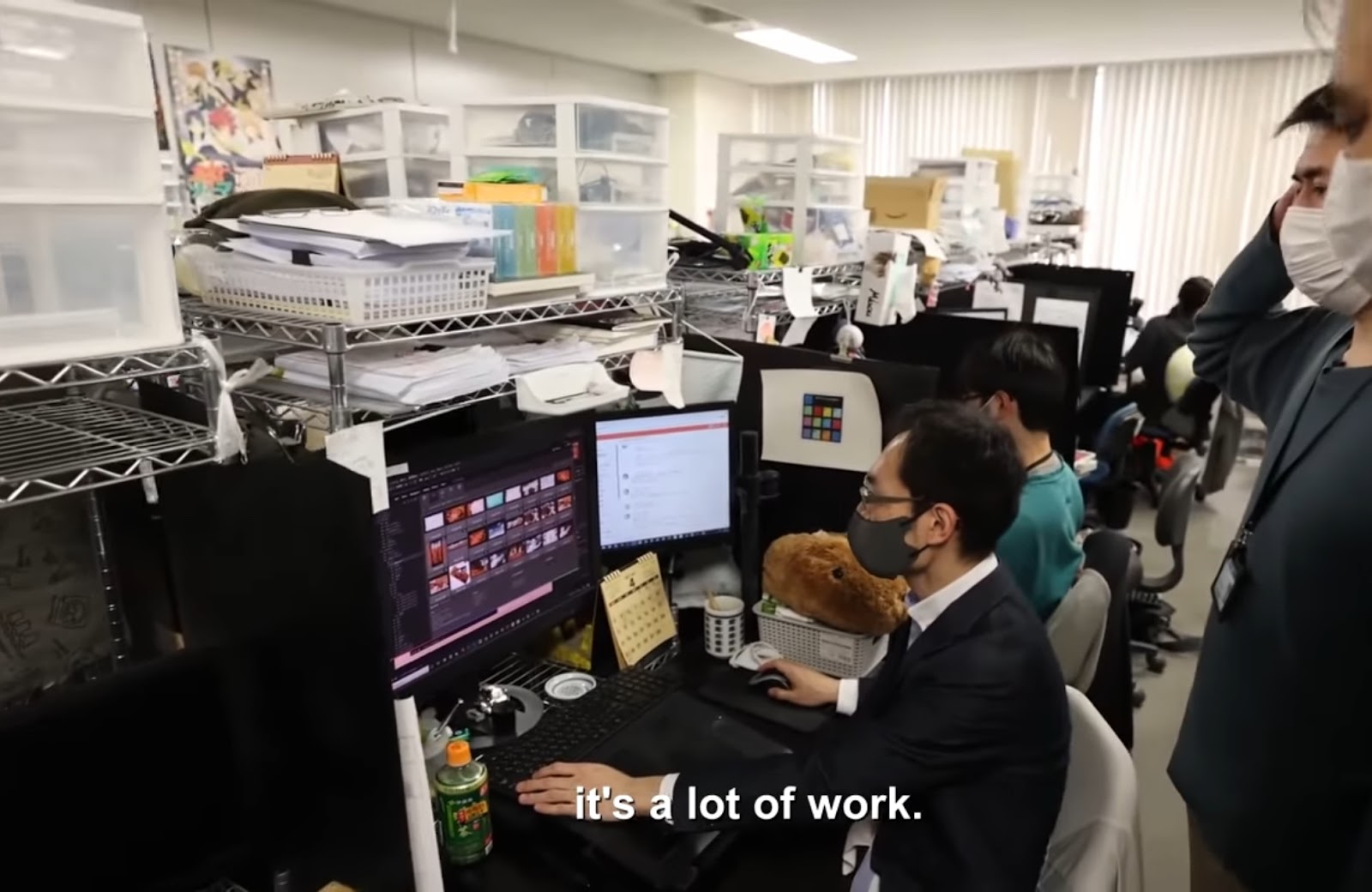Welcome to the dynamic realm of animation, where the fusion of boundless creativity and cutting-edge technology gives rise to a plethora of captivating visual narratives. This comprehensive exploration of animation facts unravels the industry’s evolution, diverse techniques, profound impact, leading studios, cultural influences, persistent challenges, and the evolving trends that shape its promising future.
Evolution of Animation
The evolution of animation spans over a century, from the groundbreaking “Gertie the Dinosaur” in 1914 to the present-day CGI wonders. Notably, Winsor McCay’s creation marked a pivotal moment, laying the foundation for the rich tapestry of animation storytelling and providing fascinating animation facts.
Persistence of Vision Marvel
At the core of animation lies the ingenious utilization of the persistence of vision principle, a visual phenomenon where the human eye retains an image for a fraction longer than it appears. This phenomenon, crucial to animation, forms the backbone of intriguing animation facts.
Animation Techniques
The mesmerizing magic of animation is crafted through an array of techniques, each contributing to the enchanting visuals gracing screens worldwide. Delving into animation facts reveals the intricate details of these techniques.
Stop-Motion Marvels
The meticulous craftsmanship of stop-motion animation, exemplified in classics like “The Nightmare Before Christmas,” involves the frame-by-frame photography of physical objects, resulting in a tangible and tactile world that captivates audiences with its palpable charm and offers fascinating animation facts.
Rotoscoping Realism
Rotoscoping, a technique applied in films like “A Scanner Darkly,” intricately blends the real and the surreal by tracing over live-action footage frame by frame. This technique, explored in animation facts, creates a unique visual experience that resonates with audiences.
Claymation Wonders
Claymation, as showcased in the works of Nick Park (“Wallace and Gromit”), adds another layer of creativity by crafting characters and scenes from clay. The charm lies not only in the animation but also in the humor derived from the tactile nature of the characters, revealing intriguing animation facts.
Impact of Animation
Beyond entertainment, animation leaves an indelible mark on culture, education, and technological advancements, shaping the way stories are told and experienced. Exploring animation facts sheds light on the profound impact of this art form.
Anime’s Global Appeal
Japanese anime transcends cultural barriers with its distinct style and deep storytelling. Notable series like “Naruto” and “Attack on Titan” exemplify the universal resonance of animated narratives, showcasing intriguing animation facts.
Animation in Education
Animated educational content, epitomized by the “Schoolhouse Rock!” series, proves to be a powerful tool for making learning engaging. The fusion of music and animation creates a dynamic and memorable educational experience that resonates across generations, a noteworthy point in animation facts.
Notable Animation Studios
The animation landscape is marked by iconic studios that have not only defined the industry but continue to push the boundaries of creativity. Delving into animation facts provides insights into the remarkable achievements of these studios.
Pixar’s Technological Marvels
Pixar, a pioneer in computer animation, consistently pushes technological boundaries. Films like “Toy Story” not only entertain but also showcase the studio’s relentless pursuit of innovation in storytelling and animation techniques, a crucial aspect highlighted in animation facts.
Studio Ghibli’s Artistic Excellence
Under the guidance of Hayao Miyazaki, Studio Ghibli crafts timeless classics like “Spirited Away.” The commitment to hand-drawn animation and rich storytelling sets a standard for artistic excellence that resonates with global audiences, a significant point in animation facts.
DreamWorks Animation’s Dynamic Storytelling
DreamWorks Animation, known for “Shrek” and “How to Train Your Dragon,” brings a dynamic and often irreverent storytelling approach to animation, appealing to a broad audience and continually exploring new narrative frontiers, a fascinating revelation in animation facts.
Explore more facts about animated movies
Animation in Different Cultures
Animation acts as a cultural storyteller, with each region infusing its unique flavor into the art form, creating a diverse tapestry of animated narratives. This diversity is an essential aspect of animation facts.
Bollywood’s Animated Extravaganza
India’s Bollywood ventures into animation with films like “Hanuman” and “Krishna Aur Kans,” blending vibrant visuals with mythological narratives in a cinematic spectacle that showcases the cultural richness of the Indian subcontinent, a distinctive point in animation facts.
European Animation’s Aesthetic Appeal
European animation, epitomized by works like “The Triplets of Belleville,” often explores unconventional storytelling methods, captivating audiences with its visual poetry, unique artistic aesthetics, and a distinct approach to narrative structure, emphasizing the cultural diversity explored in animation facts.
Challenges in Animation
Behind the enchantment of animation lies a blend of challenges that animators and studios navigate to deliver compelling stories. Understanding these challenges is a crucial aspect of animation facts.
Balancing Quality and Schedule
Navigating the delicate balance between meeting tight production schedules and maintaining animation quality demands strategic planning. It ensures that creativity flourishes without compromising deadlines, a significant challenge discussed in animation facts.
Cost Constraints
High production costs pose a perpetual challenge. The creation of detailed 3D models and intricate animations requires significant financial investments, adding a layer of complexity to the animation process and pushing studios to find innovative cost-effective solutions, an essential aspect of challenges highlighted in animation facts.
Future Trends in Animation
The future of animation unfolds with exciting possibilities as technology continues to advance, ushering in new dimensions and methods of storytelling.
Virtual Reality’s Immersive Frontiers
Virtual reality (VR) and augmented reality (AR) enhance the animation experience. Stepping into animated worlds offers a new dimension to storytelling, creating immersive and engaging narratives that redefine the audience’s relationship with animated content, a groundbreaking trend explored in animation facts.
AI’s Influence
Artificial intelligence (AI) is increasingly shaping animation production. Automated processes for in-betweening and character design streamline workflows, allowing animators to focus more on the creative aspects of storytelling while presenting new challenges and opportunities, a transformative trend addressed in animation facts.
NFTs and Blockchain in Animation
Non-fungible tokens (NFTs) and blockchain technology are emerging trends, allowing creators to tokenize and monetize their animated creations. This decentralization of the animation industry brings new opportunities and challenges, revolutionizing how animated content is created, distributed, and monetized, an innovative trend outlined in animation facts.
Animated Films for Developing Animation Appreciation
- “Spirited Away” (2001) – Directed by Hayao Miyazaki. This Japanese animated film from Studio Ghibli offers a unique perspective on the fantasy world and showcases breathtaking hand-drawn animation;
- “The Incredibles” (2004) – Directed by Brad Bird. This Pixar film not only delivers a compelling superhero story but also showcases the studio’s expertise in computer-generated animation;
- “Wall-E” (2008) – Directed by Andrew Stanton. A visually stunning film from Pixar, “Wall-E” explores themes of environmentalism through its creative use of animation and storytelling;
- “Coraline” (2009) – Directed by Henry Selick. Known for its meticulous stop-motion animation, “Coraline” takes viewers on a dark and imaginative journey;
- “Spider-Man: Into the Spider-Verse” (2018) – Directed by Peter Ramsey, Rodney Rothman, and Bob Persichetti. This animated superhero film stands out for its innovative visual style, combining computer animation with comic book aesthetics;
- “Your Name” (2016) – Directed by Makoto Shinkai. A Japanese anime film that beautifully blends traditional hand-drawn animation with modern digital techniques, offering a heartfelt and visually stunning experience;
- “Toy Story” Series (1995-2019) – Directed by John Lasseter and others. The “Toy Story” franchise not only revolutionized animation with the first fully computer-animated feature film but also continued to raise the bar in subsequent installments;
- “Waltz with Bashir” (2008) – Directed by Ari Folman. This Israeli animated documentary uses a unique combination of animation and real footage to explore the director’s experiences during the Lebanon War;
- “Akira” (1988) – Directed by Katsuhiro Otomo. A groundbreaking Japanese animated film that has had a significant impact on the cyberpunk genre, known for its detailed animation and complex narrative;
- “The Lion King (1994) – Directed by Roger Allers and Rob Minkoff. A classic Disney animated film that not only tells a powerful story but also showcases traditional hand-drawn animation at its finest.
These films span various animation styles, from traditional hand-drawn animation to stop-motion and cutting-edge computer-generated imagery, offering a diverse appreciation of the art form.
Conclusion
In the dynamic world of animation, where creativity converges with technology, the future holds promise. From the early pioneers to the present-day visionaries, animation continues to evolve, leaving an enduring impact on global storytelling.
As we navigate cultural nuances, overcome challenges, and embrace emerging trends, the allure of animation persists, a testament to its timeless and ever-expanding significance in shaping the narratives of our digital age.



